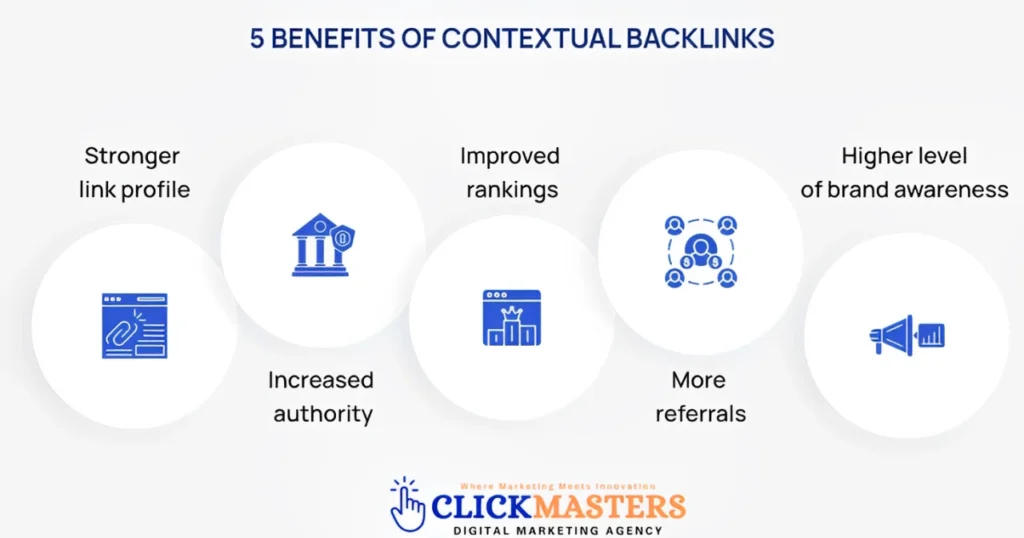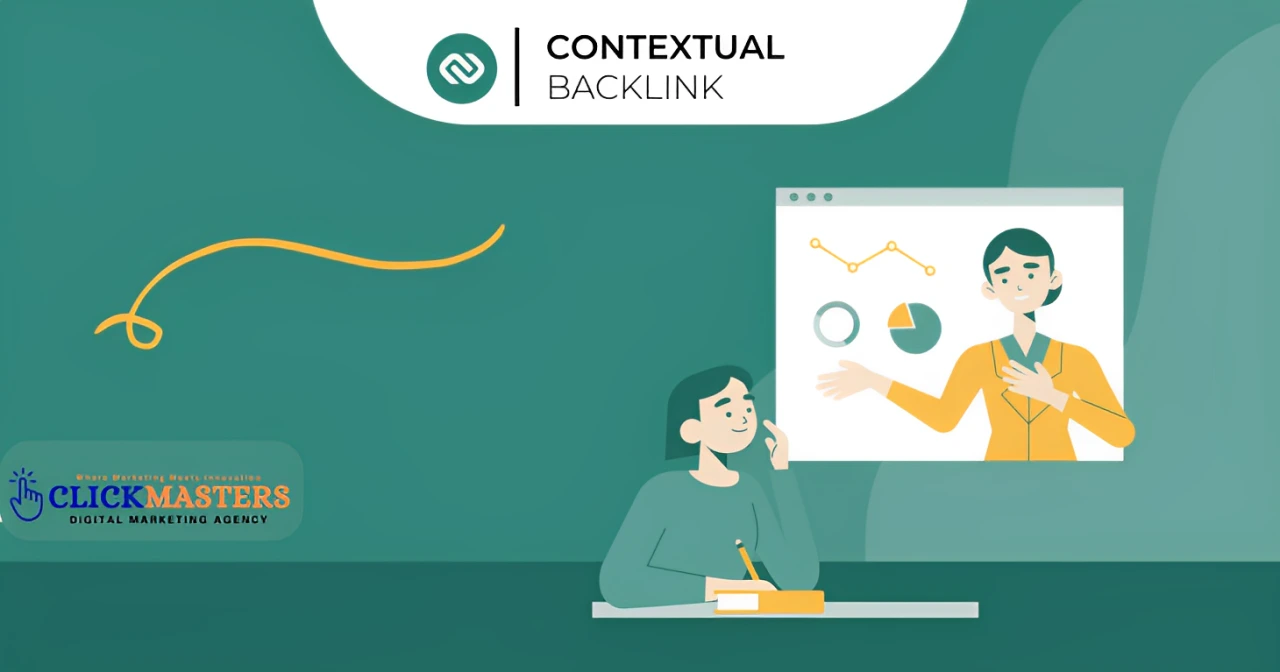In the fast world of search engine optimization (SEO), backlinks play a crucial role in determining a website’s authority, trustworthiness, and ranking on search engines like Google. However, not all backlinks are created equal. Among the different types of backlinks, contextual backlinks stand out as some of the most valuable.
In this article, we’ll dive deep into what contextual backlinks are, why they matter for SEO, and how you can strategically acquire them to boost your website’s visibility.
What Are Contextual Backlinks?
A contextual backlink is a link that is naturally placed within the body of a relevant and informative piece of content. Unlike sidebar or footer links, contextual backlinks are embedded within the main content of a webpage and are surrounded by related text. These links often provide additional value to readers by directing them to more relevant information.
For example, if you run a tech blog and write an article about “The Best Laptops for Students,” linking to a detailed review of a specific laptop model within the article is a contextual backlink. There are three types of contextual backlinks based on the relationship between the linking site and the linked page:
- Internal contextual links
- Inbound contextual links
- Outbound contextual links
Internal Contextual Links
Internal contextual links connect different pages within the same website.
Example: A blog post linking to another relevant article within the same blog, such as Influencer Marketing Hub linking to another page on their site.
By interlinking related content, you enhance user navigation and improve site structure, making it easier for search engines to index your pages effectively.

How Our Agency Boosts Your Website Traffic
- SEO That Brings Long-Term Success
- Transform Your Traffic into Loyal Customers
- SEO Strategies for Sustainable Growth
Inbound Contextual Links
Inbound contextual links, also known as backlinks, are links from external websites pointing to pages on your site.
Example: A reputable website linking to an article on EarthWeb.
These links are crucial for SEO as they signal to search engines that your content is credible and authoritative in its field.
Outbound Contextual Links
Also referred to as external links, outbound contextual links direct users from your website to external sites.
Example: Semrush linking to an external resource, even if it’s one of their own, is considered an outbound link.
Outbound links provide readers with additional references and resources. While they may lead users away from your site, adding the target=”_blank” attribute ensures they open in a new tab, keeping your site accessible.
Characteristics of Contextual Backlinks:
- Relevance: The link is placed within related content that aligns with the linked page’s topic.
- Natural Placement: The link flows naturally within the text and provides value to the reader.
- Authority: Often found on authoritative websites, making them more impactful.
- Anchor Text Optimization: The link is embedded in relevant anchor text that describes the linked content.

Why Are Contextual Backlinks Important for SEO?
Google’s algorithm evaluates backlinks based on quality, relevance, and placement. Contextual backlinks are considered high-quality links because they occur naturally in valuable content and improve the reader’s experience. Here’s how they impact SEO:
Boost Search Engine Rankings
Search engines like Google use backlinks as a ranking signal. When a website receives contextual backlinks from authoritative sources, Google views it as a sign of credibility and relevance, helping improve its rankings in search results.
For instance, if a trusted website like Forbes links to your blog post about “AI in Marketing,” Google perceives your content as valuable, increasing its chances of ranking higher.
Enhance Website Authority
Domain authority (DA) is a score that predicts how well a website will rank on search engines. High-quality contextual backlinks from reputable sites help increase your DA, making your website more authoritative in your niche.
Drive Targeted Traffic
Since contextual backlinks are placed within relevant content, they attract highly targeted visitors. For example, if an article about “Healthy Diet Plans” links to your nutrition website, readers interested in health will be more likely to click on the link, leading to higher engagement.
Improve Indexing and Crawling
Google bots use links to discover and index web pages. Contextual backlinks help search engines find new content faster, improving your website’s visibility in search results.
Build Brand Trust and Credibility
Getting a backlink from a high-authority website acts as a vote of confidence. Readers trust credible sources, so if a respected site links to your content, it boosts your brand’s reputation and encourages more engagement.
How to Get High-Quality Contextual Backlinks
Earning contextual backlinks requires a strategic approach. Here are some proven ways to acquire them:
Create High-Quality, Link-Worthy Content
The best way to attract contextual backlinks is by producing valuable content that others want to reference. This can include:
- In-depth guides
- Case studies
- Research-based articles
- Infographics
- Original data and statistics
When your content is informative and engaging, bloggers and industry experts are more likely to link to it.
Guest Blogging on Authoritative Sites
Guest blogging involves writing articles for reputable websites in your niche. In return, you can include a contextual backlink to your site within the content.
Tips for Effective Guest Blogging:
- Choose high-authority websites relevant to your niche.
- Write high-quality, informative content.
- Ensure your backlink is naturally placed within the article.
Broken Link Building
This strategy involves finding broken links on authoritative websites and suggesting your content as a replacement.
Steps to Follow:
- Use tools like Ahrefs or Screaming Frog to find broken links.
- Reach out to the website owner, informing them about the broken link.
- Suggest your relevant content as an alternative.
Skyscraper Technique
Coined by Brian Dean of Backlinko, the Skyscraper Technique involves:
- Finding top-performing content in your industry.
- Creating an improved version with better insights, updated data, and more visuals.
- Reaching out to websites that link to the original content and suggest your upgraded version.
Leverage HARO (Help a Reporter Out)
Journalists and bloggers use HARO to find expert opinions for their articles. By responding to relevant queries, you can get quoted and earn contextual backlinks from authoritative media outlets.
Build Relationships with Industry Influencers
Networking with influencers and bloggers in your niche can lead to natural backlinks. Engage with their content, share their posts, and collaborate on projects to increase your chances of earning contextual links.
Publish Original Research and Data
If you conduct original research, and surveys, or publish industry reports, other websites will naturally link to your data, as unique insights are valuable for content creation.
Get Featured in Roundup Posts
Many websites publish roundup articles featuring expert opinions or top resources on a topic. Pitch your content or expertise to be included in these posts, which often contain contextual backlinks.
Best Practices for Contextual Backlinks
While getting contextual backlinks is beneficial, it’s important to follow best practices to maximize their impact:
- Focus on Quality Over Quantity: A few high-quality backlinks from authoritative sites are better than hundreds of low-quality links.
- Use Relevant Anchor Text: Ensure the anchor text naturally fits the content and accurately describes the linked page.
- Avoid Spammy Practices: Buying links, using link farms, or engaging in link equity schemes can result in Google penalties.
- Diversify Your Backlink Sources: Getting links from different domains and industries enhances your link profile.
- Monitor Your Backlinks: Use tools like Google Search Console, Ahrefs, or Moz to track and analyze your backlinks.
Conclusion
Contextual backlinks are a powerful SEO strategy that can significantly improve your website’s authority, rankings, and traffic. By focusing on earning high-quality, relevant links naturally embedded in valuable content, you can boost your online presence and credibility.
Implementing strategies like guest blogging, the Skyscraper Technique, broken link building, and creating original research will help you secure contextual backlinks from authoritative sites. Prioritizing relevance, quality, and natural placement will ensure long-term SEO success.
Invest time in building strong contextual backlinks, and you’ll see the impact on your search engine rankings and overall website performance!

How Our Agency Boosts Your Website Traffic
- SEO That Brings Long-Term Success
- Transform Your Traffic into Loyal Customers
- SEO Strategies for Sustainable Growth
FAQs
What are contextual backlinks?
Contextual backlinks are links placed within the body of content, such as articles or blog posts, that are relevant to the linked page. Unlike sidebar or footer links, they are embedded within the main text and provide additional value to the reader by linking to relevant information.
Why are contextual backlinks important for SEO?
Contextual backlinks improve SEO by boosting search engine rankings, increasing website authority, driving targeted traffic, enhancing indexing and crawling by search engines, and building trust and credibility for your brand.
How do contextual backlinks impact search engine rankings?
Search engines like Google use backlinks as ranking signals. When authoritative websites link to your content within a relevant context, it indicates that your content is credible and valuable, which can help improve your rankings in search results.
What is the difference between internal, inbound, and outbound contextual links?
Internal Contextual Links: These links connect different pages within the same website.
Inbound Contextual Links: Also known as backlinks, these links come from external websites pointing to your content.
Outbound Contextual Links: These links direct users from your website to external sites.
How can I acquire high-quality contextual backlinks?
Some proven strategies include creating high-quality content, guest blogging on authoritative sites, broken link building, using the skyscraper technique, leveraging HARO (Help a Reporter Out), building relationships with influencers, publishing original research, and getting featured in roundup posts.
What is the Skyscraper Technique?
The Skyscraper Technique involves finding top-performing content in your industry, creating an improved version with better insights, updated data, and more visuals, and then reaching out to websites that link to the original content to suggest your upgraded version.








